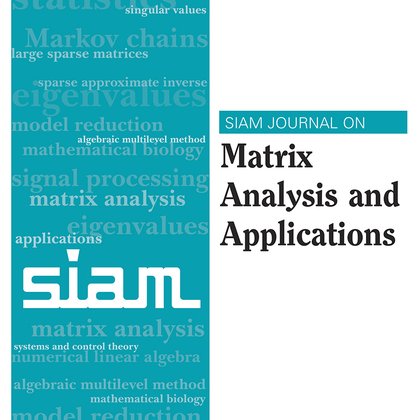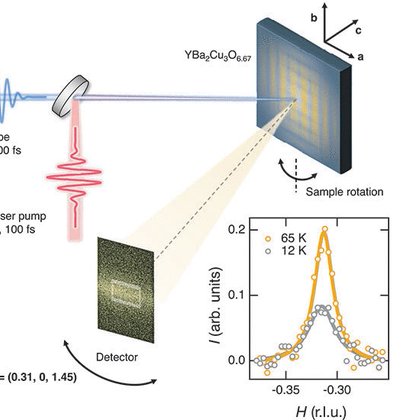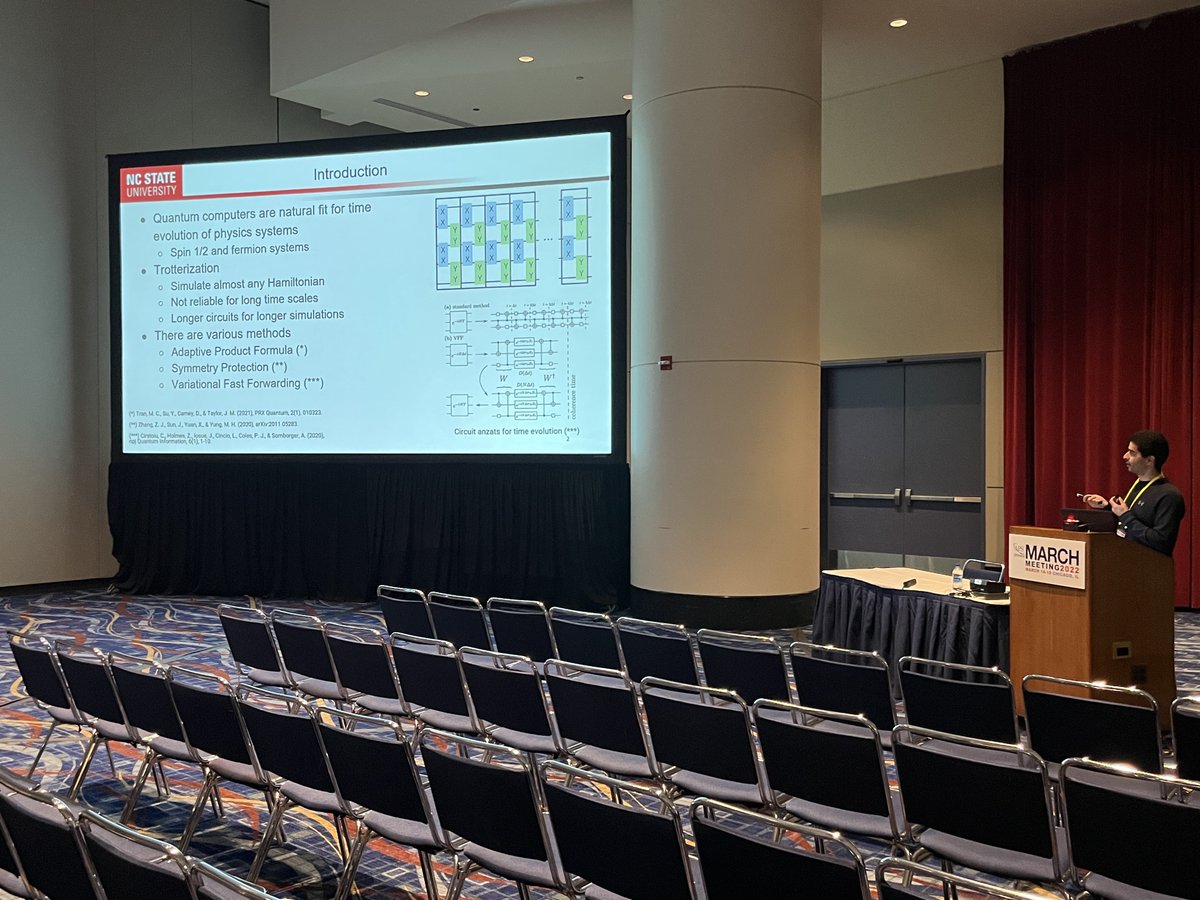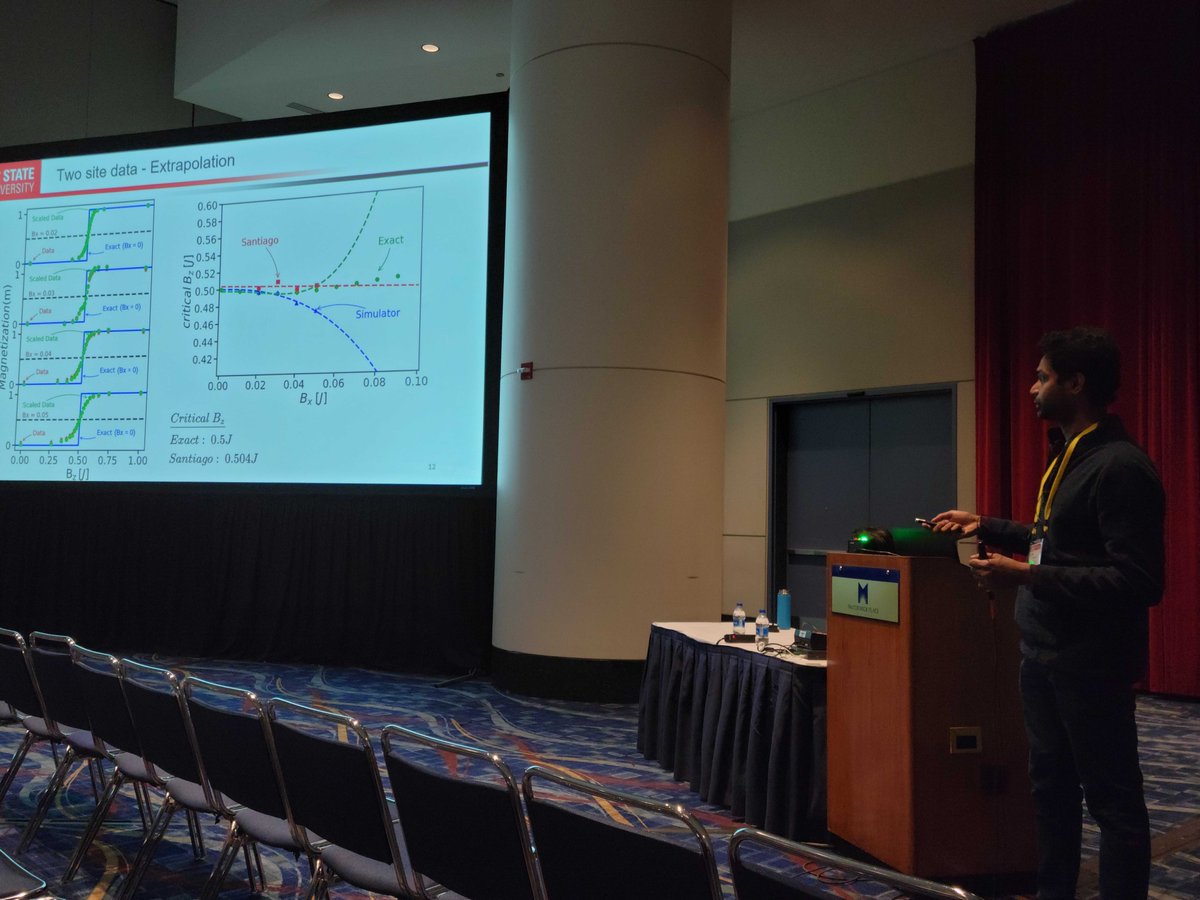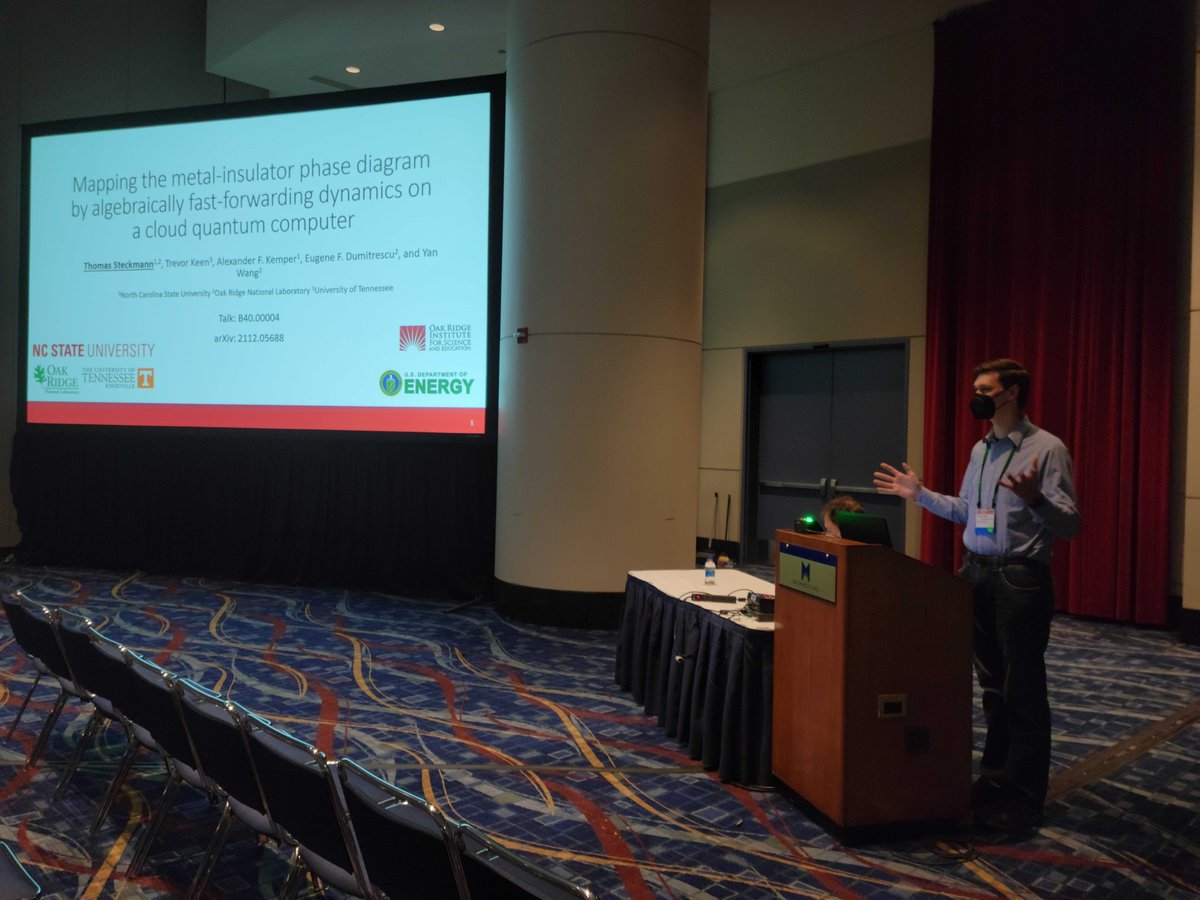
KemperLab
@KemperLab
Followers
190
Following
107
Media
60
Statuses
179
RT @PhysRevResearch: Mapping the metal-insulator phase diagram by algebraically fast-forwarding dynamics on a cloud quantum computer, Thoma….
0
3
0
For more details, see our preprint Thanks to Efekan Kökcü, Heba Labib @ncstatephysics, and Jim Freericks @Georgetown. 6/6.
1
0
1
Next up, you can get fermionic as well as bosonic correlation functions *without* additional effort! We have two ways of doing this (post-selection and auxiliary operator), but both work pretty well as seen from data obtained on @IBMResearch ibm_auckland with @qiskit. 5/n
1
0
4
Highlight #2: Adiabatic state preparation with varying particle number. The compression lets us pick as small of a time step as we like, and incorporating the particle creation/annihilation operator lets us transition between particle number sectors. 4/n
1
0
0
Highlight #2: Compressing controlled evolution. By introducing a new mathematical block P, we can achieve compression of a controlled evolution. 3/n
1
0
0
Highlight #1: Compressing long range hopping. Using this, we embed a 4x4 lattice in a 16-qubit chain on @IBMResearch's Washington quantum processor. The fermions freely evolve from one corner to of the lattice, and we track their distance from the corner. 2/n
1
0
0
Paper alert! Our Algebraic Compression method has some new some new capabilities: long-range hopping, arbitrary lattices and controlled time evolution for free fermion systems in fixed depth circuits. With @wa_de_jong, @CampsDaan, @RoelVanBeeumen . 1/n
1
3
8
The second of our joint publication with @BerkeleyLab is out! A bit more math, a bit less physics, but all good. With @wa_de_jong, @quantumblonde, @RoelVanBeeumen, @doc_lex.
epubs.siam.org
Quantum computing is a promising technology that harnesses the peculiarities of quantum mechanics to deliver computational speedups for some problems that are intractable to solve on a classical...
0
1
4
Excited to have been a part of this long collaboration. Enhanced charge density wave coherence in a light-quenched, high-temperature superconductor
science.org
Ultrafast resonant soft x-ray scattering is used to monitor the dynamics of the charge density wave order in YBa2Cu3O6+x.
1
4
11
Thomas gave an excellent talk at #apsmarch about using DMFT on quantum computers! More to come from our group in the next few days.
0
5
18
Super excited this work is out in @ScienceAdvances !.
Quantum computers can analyze systems that are too complicated for conventional ones. But even they have their limits. Scientists @NCState figured out how to bypass a certain step, allowing quantum computers to measure thermodynamic properties of systems:
0
0
4











